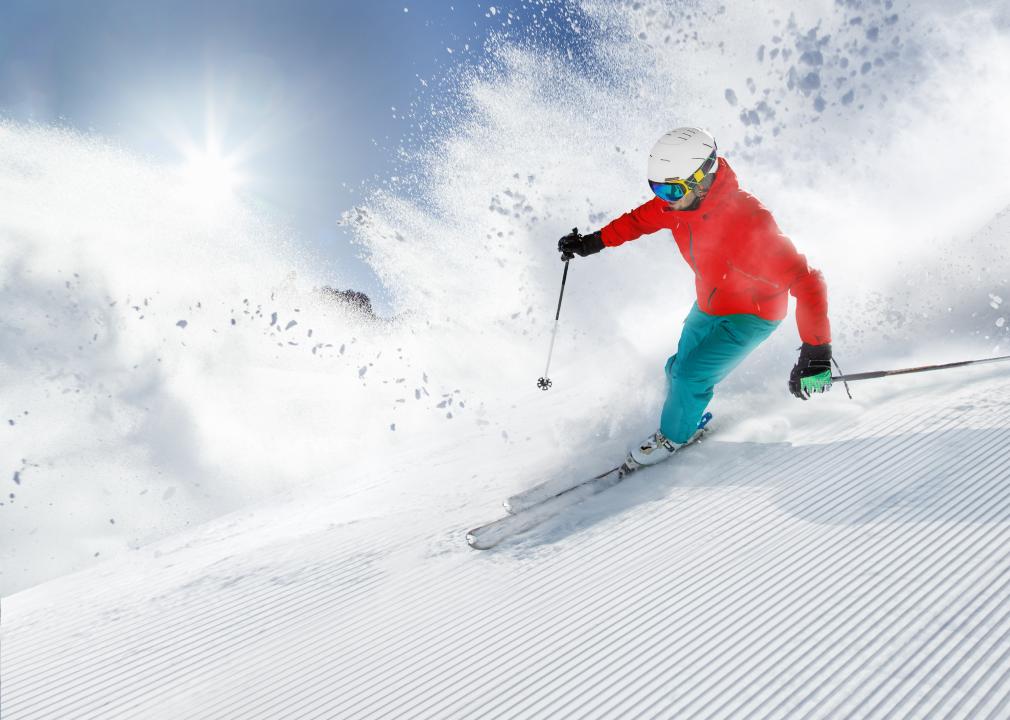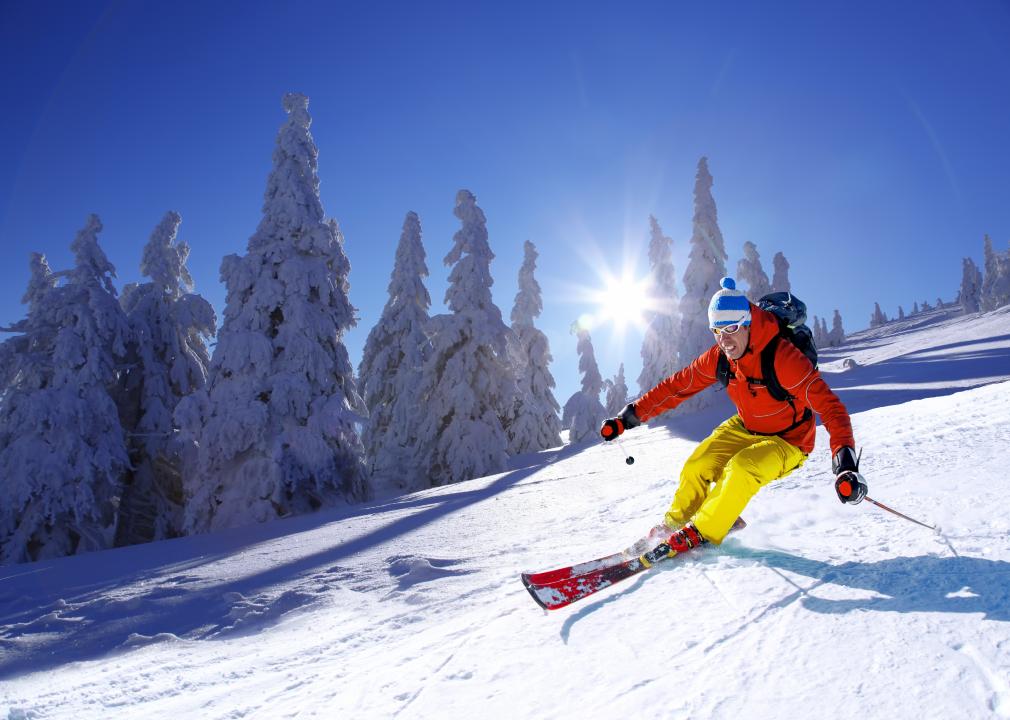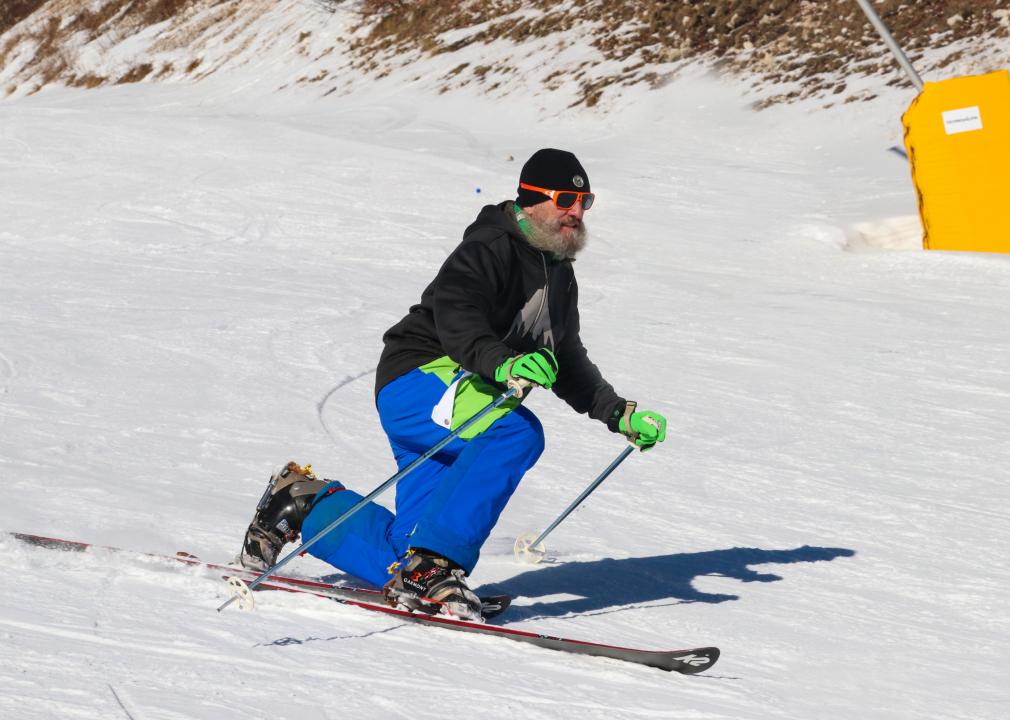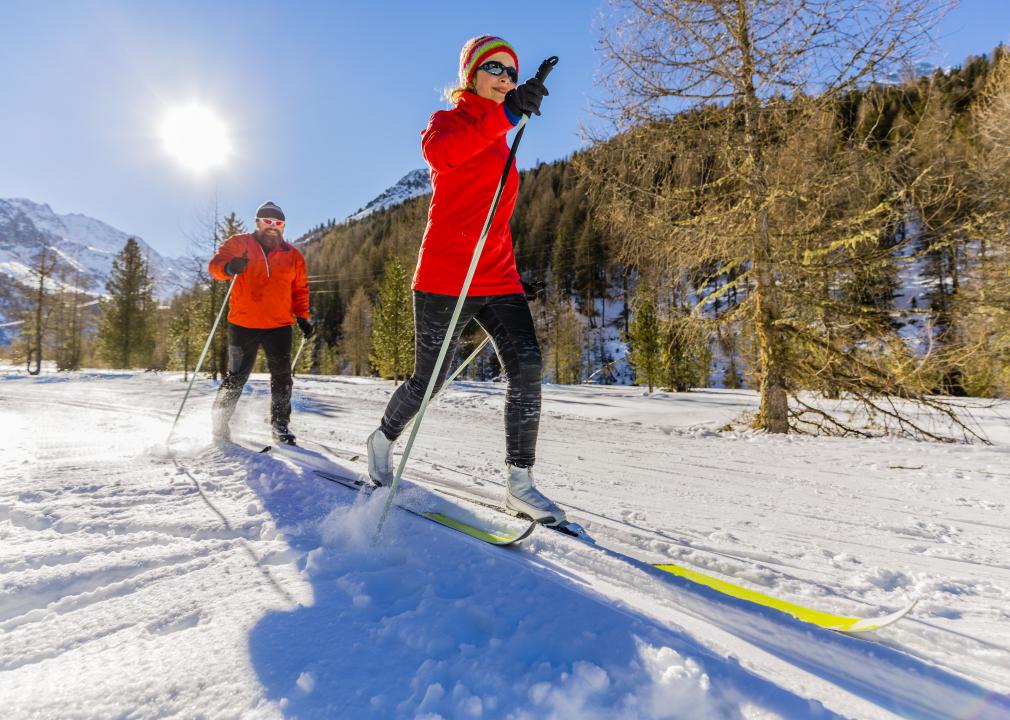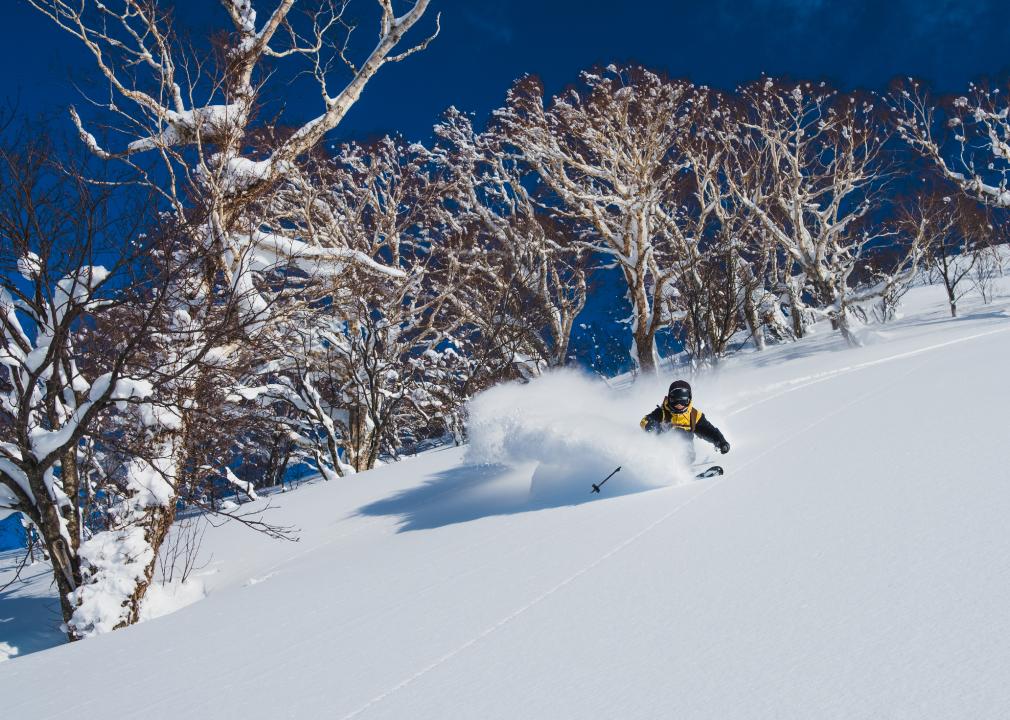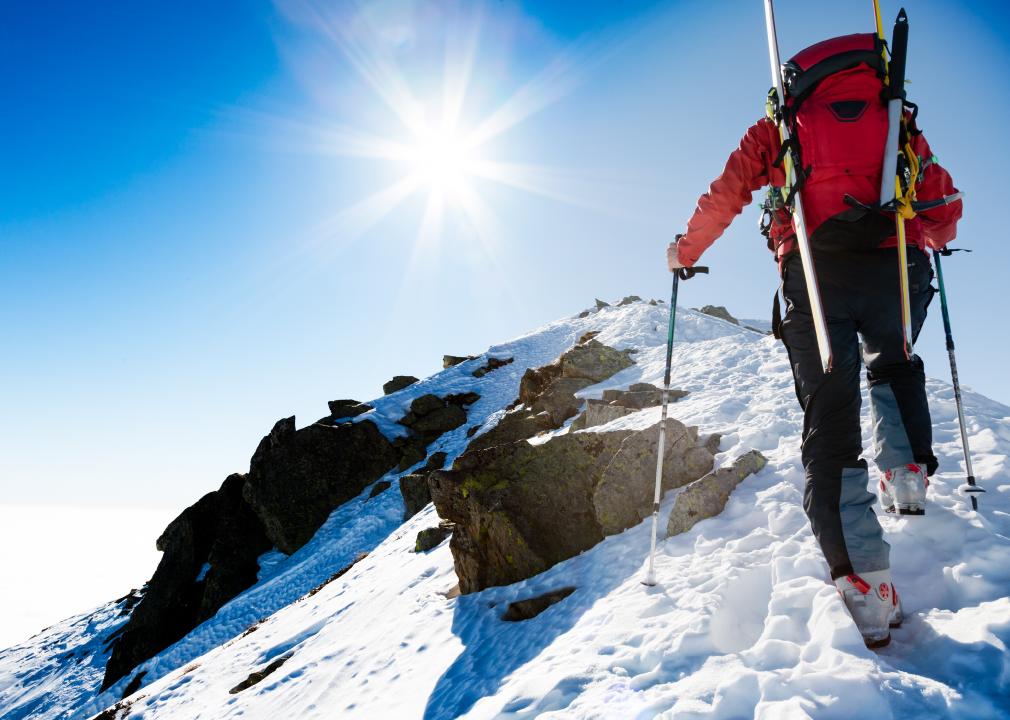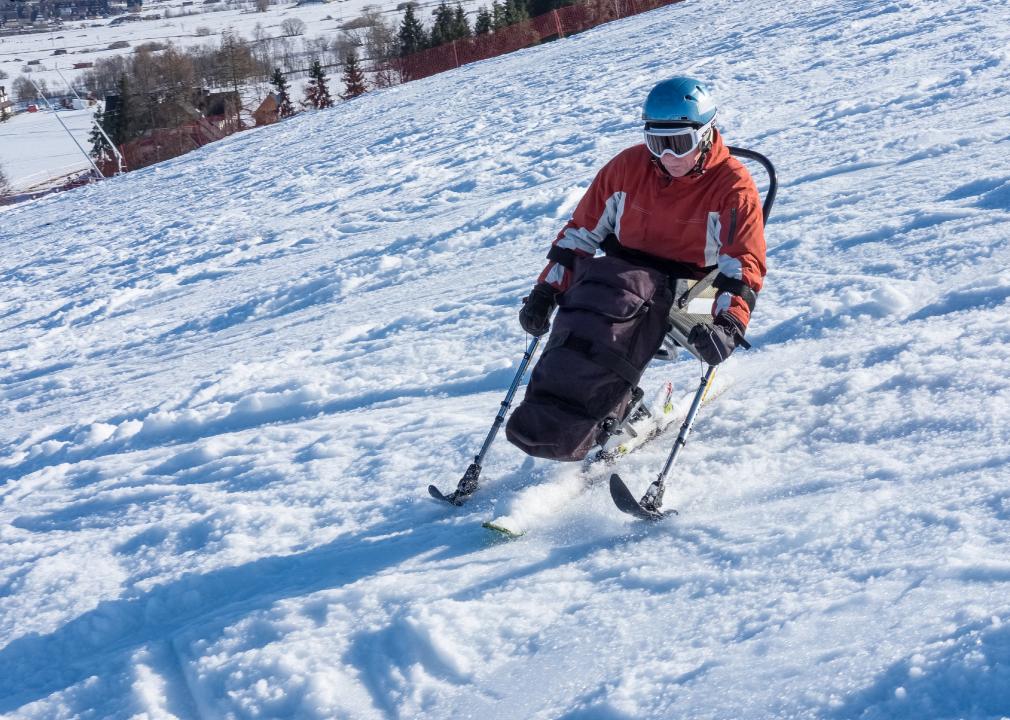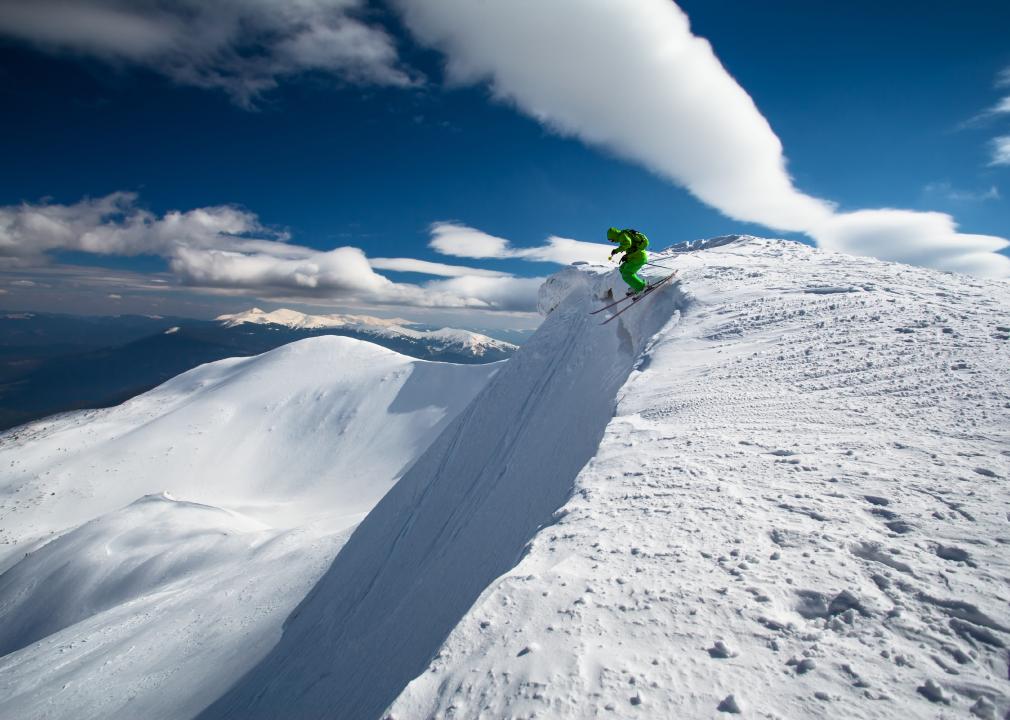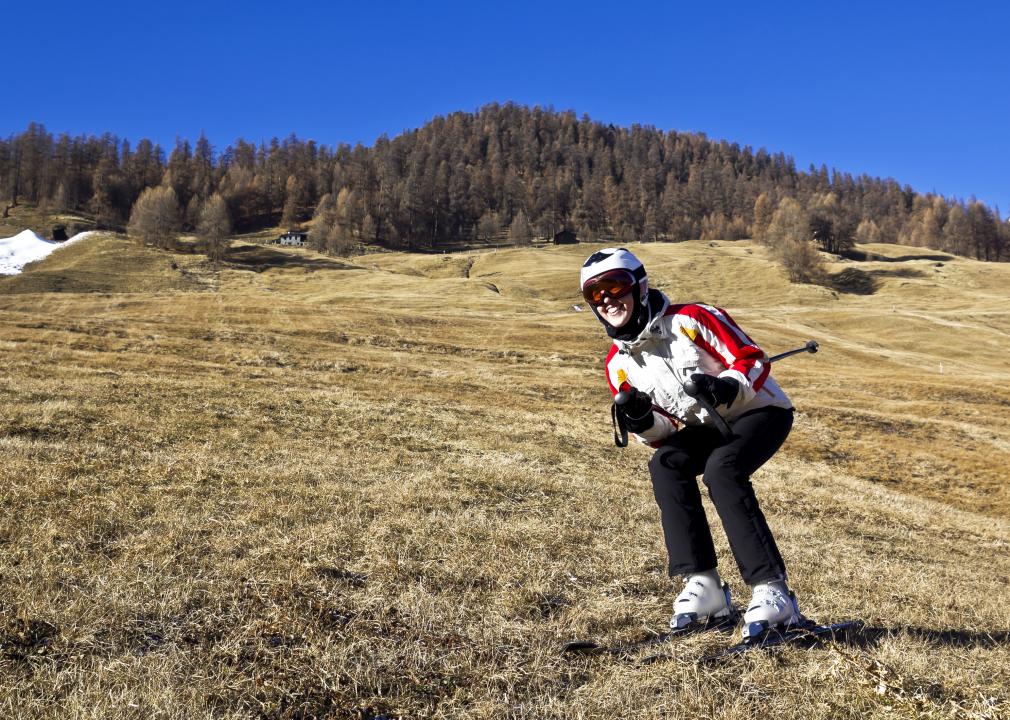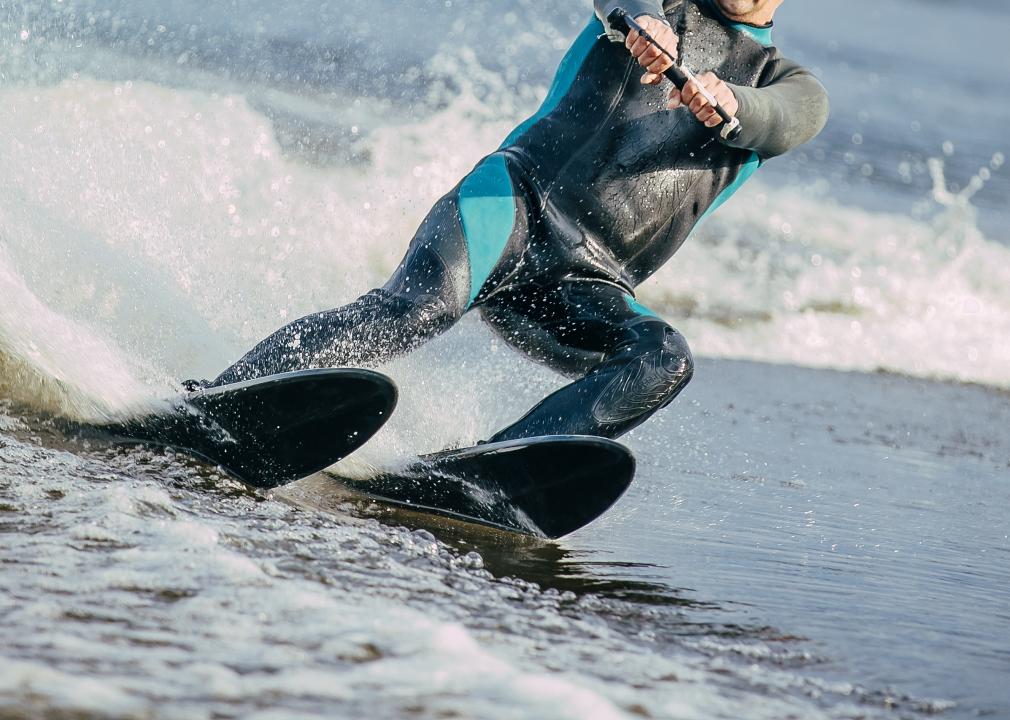Breaking down different kinds of skiing
Lukas Gojda // Shutterstock
Breaking down different kinds of skiing
Traversing or gliding across snow has been a common sport for millennia. Fragments of skis—primitive but unmistakably similar to the skis of today—found in the north of Russia date back to 6,000 B.C.
Theorized to be used as a means to cross swaths of frozen land and hunt, skiing eventually transformed from a tool of survival to an activity done for fun. While people have long sailed down the Alps on skis, the advent of film and television sent skiing global. Skiing and big-mountain explorations were captured by filmmakers like “Ski Bum” Warren Miller, while James Bond regularly escaped foes on the slopes. The sport became popular in many places around the world with the climate and terrain to support it—and even in places where it doesn’t, as is the case with Dubai’s indoor ski park.
Skiing became the sport we know today in Norway thanks to the country’s history with skiing that made its way into military training and eventually competitions, personified by Sondre Norheim. Norheim crafted his own skis and dominated early competitions in the late 1860s and 1870s. Skiing spread in popularity across Europe and debuted in the first Winter Olympics in 1924 in Chamonix, France, with Nordic and jumping events.
Skiing in the Olympics has since grown into five main ski events: alpine, cross-country, jumping, freestyle, and a combined event consisting of both jumping and cross-country racing. Mogul, ski cross, halfpipe, and slopestyle are newer additions to the freestyle event.
Skiers like Olympian Bode Miller became household names. Athletes Sarah Burke and Shane McConkey captured the hearts of fans across the globe before untimely deaths. Others jumped from success on the slopes to parallel careers as entrepreneurs, including heli-skiing mountaineers Doug Coombs and Dean Cummings, and those who started their own ski companies, including Tanner Hall and the late JP Auclair, who founded Armada. Those and more skiing athletes have continued to evolve the sport. The X Games include new, 21st-century events like slopestyle and ski superpipe, and hosts informal competitions in urban skiing.
Meanwhile, mere mortals who have viewed these superheroes are curious about how best to explore on snow, and what gear to get. Curated breaks down seven types of skiing, along with the type of equipment you’ll need, notable figures, and a basic history of that type of skiing. Continue reading to learn more about options you might want to try.
![]()
Tomas Marek // Shutterstock
Alpine/downhill skiing
Those who know skiing primarily via the Olympics are probably most familiar with the competitive side of alpine, aka downhill, skiing. But the everyday skier isn’t necessarily focused on speed. Accessing terrain—via mechanized options, including chairlifts, gondolas, rope tows, and magic carpets—is one of the aspects that sets this type of skiing apart from those that require human power to ascend the mountain before gliding back to the base.
Different options of skis allow skiers to choose the perfect ski to manage the surface they’re gliding across on a given day. Width, stiffness, and dimensions are altered to make skis that handle different conditions. Carving skis—often used in the American northeast or generally in icy conditions—are thinner, with edges set at different angles to facilitate carving into the ice while skiing.
Skiers in the Western states—with consistent natural snowfall or “deep pow”—make more use of wider skis that are excellent for fresh powder. Those who want one ski to handle everything turn to all-mountain skis. Because there are so many subtypes within this discipline, there’s a style that fits every personality and every degree of fitness or thrill-seeking tendencies. Downhill bindings are also different from those used in other disciplines: The heel is locked down to the binding through the boot.
Mikaela Shiffrin now holds more world records in the downhill discipline than any other American skier, and Sweden’s Ingemar Stenmark still holds the record for most World Cup wins overall.
Daniele Romano // Shutterstock
Telemark/free-heel skiing
Telemark is an old-school kind of skiing that’s becoming a bit of a lost art. It’s mainly seen in downhill skiing in-bounds, though one uses a similar technique and bindings for backcountry and freeskiing. Telemark bindings have a free-heel boot, which is useful for lunging and carving.
One notable record in the sport is that of Rainer Hertrich, a snowcat operator who telemarked every single day for eight years, logging 100 million vertical feet. Some skiers in this discipline share Hertrich’s drive —and others just like the freedom and options the sport gives them.
While such telemark skiers are becoming a rare breed, those who practice it are a voracious community who are currently pushing to bring telemarking into the 2022 Olympic Games, which could restore its popularity.
gorillaimages // Shutterstock
Cross-country/Nordic skiing
The first Winter Olympics, in 1924 at Chamonix, included a “Nordic combined” event that included both cross-country and jumping, as well as a separate jumping event.
Cross-country skis are long and light, perfect for transporting oneself a maximum distance with minimal effort—important, given that these skiers get no help traversing the mountain. And like telemark skis, the heel is free. Classic cross-country involves gliding in a parallel motion, on either tracks or off-piste, while skate cross-country involves pushing off diagonally in a movement similar to ice skating, on tracks designed specifically for this discipline.
Because this sport can take skiers into the depths of the wilderness, it’s appealing to those seeking the peace inherent in that environment. Other participants use cross-country skiing as cross-training for other sports, including competitive cycling.
Flystock // Shutterstock
Backcountry skiing (also known as alpine touring)
Exploring the backcountry gives you access to untracked (or at least less-tracked) powder and terrain in off-piste areas, but you typically have to “earn your turns” by “skinning” up the mountain. Specialized lighter-weight alpine touring (AT) bindings will be especially helpful when climbing up the mountain.
Alpine touring boots help with allowing greater foot mobility and strength in instances where you’re skinning uphill. Then, of course, there’s the need for a lot of aerobic capacity and lower-body strength. Those with bigger budgets and less desire for an uphill workout can also get to virgin snow via snowcat or helicopter. This type of skiing attracts adventurers as well as those who love the calm of the wilderness.
What’s most important to bring with you on backcountry excursions is knowledge, certification, and respect for the dangers of out-of-bounds skiing. The risk of backcountry skiing is heightened for those who are not trained in avalanche safety. The COVID-19 pandemic resulted in more people than usual flocking to the slopes in the 2020–21 winter season, many of them inexperienced. This resulted in the season tying the record for most deaths due to avalanches in the U.S., with 36 lives lost.
Before contemplating a backcountry adventure, it’s advisable to complete an avalanche safety course, and learn how to use a beacon, a probe, and a shovel.
A beacon is an electronic device that communicates with other beacons for the purpose of alerting those nearby to someone stuck under deep snow. A probe is used to pinpoint the horizontal location of a person buried following an avalanche. Additionally, it can be used as a measuring device that gauges the depth of snow. Before you go backcountry skiing, tracking avalanche conditions for the day is a must. There are several apps for exactly this. Finally, backcountry skiing should never be undertaken alone. It’s also a good idea to gain plenty of practice in controlled environments and to bring a first aid kit and food and water.
There’s also sidecountry skiing on terrain that is outside of the ski area boundary and less-traversed because of the advanced skills and/or hiking or skinning required to get there. Ultimately, sidecountry skiers are at a higher risk as there is no ski patrol or avalanche mitigation in the sidecountry. Sidecountry skiing is often where people get hurt because it is more easily accessible, lulling inexperienced skiers into a false sense of security.
Roberto Caucino // Shutterstock
Ski mountaineering
One step beyond backcountry skiing is mountaineering, which may involve traversing the mountain by foot at times while carrying your skis, as well as additional gear, including crampons, rope, and an ice axe.
This sport attracts the adventurous and those who possess—or want to develop—multiple skillsets for exploring the mountain. Knowledgeable ski guides can help those getting into mountaineering with introductions to difficult terrains and best practices for enjoying this more extreme form of skiing safely. Like any enterprise that takes skiers to isolated or rough terrains, it’s smart to go with friends or form small groups that retain the independence of ski mountaineering adventures while providing safety in numbers. Mountain climbing and building endurance to high altitudes are helpful for making the most of mountaineering.
Matej Kastelic // Shutterstock
Freestyle skiing
“Go big or go home” is one of the common refrains in freeskiing, where athletes seek out cliffs to jump and chutes. Even non-skiers love to see the feats of athletes in the films created by industry icons including Warren Miller and Teton Gravity Research.
Freestyle skiing, aka freeskiing, started as a reaction against the more-regimented discipline of ski racing and evolved over the years due to new options in terrain and gear. In addition to defined downhill runs, freestyle skiers look for resort-built and naturally occurring features. Terrain parks built specifically for the sport include jumps, boxes, and rails.
Wayne Wong is one of the godfathers of the sport, and today’s freeskiers are chasing some of the same thrills. Mogul skiing was added to the Olympics in 1992, with ski cross added in 2010 and halfpipe and slopestyle added in 2014, but events like the X Games and other international competitions capture as much attention.
Rudolfovich // Shutterstock
Adaptive skiing
Disability isn’t a word in the world of adaptive skiing. Technology that’s been tweaked to help with mobility challenges, and/or partners for those without sight, allow almost anyone who’s seeking the joy of gliding on snow to do so. Finances don’t have to be a show-stopper either, as there are organizations like Washington state’s Outdoors for All that rent or share sit-skis and other adaptive gear, as well as training and the chance to be part of a community, including racing.
Top adaptive skiers participate in the Paralympics, which encompass the alpine and Nordic skiing disciplines. Paralympic skiing competitions include athletes with physical disabilities like amputation, blindness/visual impairment, spinal cord injury/wheelchair-users, and cerebral palsy/brain injury/stroke.
Maxim Khytra // Shutterstock
Extreme skiing
Within freestyle skiing is extreme skiing, which is defined by stunts and jumps in terrain parks. In-park terrain skiers require a different skill set to go to a terrain park on a mountain where skiers perform jumps and flips. These skiers are the best extreme freeskiers in the world, and will often go on expeditions to remote locations to chase the thrill, like to Washington’s Cascade Mountains or to Seward, Alaska, as sponsored by Teton Gravity Research in their latest film “Stoke the Fire.”
TGR skiers do Alaskan heli-skiing with trips and jumps but not in a controlled environment.
Other than big-mountain skis, the major requirement for this sport is top-level athleticism and a never-ending need for adrenaline rushes—and of course, the same rigorous training around avalanche preparedness and the tools of beacon, a probe, and a shovel. Extreme skiing is incredibly dangerous and should never be done alone or without meaningful experience in the side and backcountry in more controlled environments.
Dmitrijs Bindemanis // Shutterstock
Grass skiing
Diehard skiers turn to green terrain to train off-season. Grass skiing is even recognized by the International Ski Federation (FIS), the international governing body for the sport that usually involves snow. Grass skiing was originally developed as a way for skiers to stay sharp in the summer months and gained in popularity until it became a competition on its own.
The devices used for grass skiing are a cross between rollerblades and very short skis, but unlike their alpine brethren, they don’t allow for standard stopping, only carving.
sportpoint // Shutterstock
Water skiing
Here’s one more option for those who just can’t get enough of traversing on two planks (and can’t make it to the Southern Hemisphere for a second winter). Water skiing was developed in 1922 in Minnesota, when 18-year-old Ralph Samuelson experimented with how to ski on water while towed by his brother in a boat.
Water-specific skis and bindings are necessary, but you’ll also need to invest in (or rent) a speedboat, ropes, and life vests. Beyond that, you very well might want a wetsuit or drysuit, unless you’re in a warmer, more-tropical climate.
This story originally appeared on Curated
and was produced and distributed in partnership with Stacker Studio.
